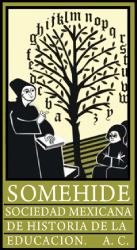Páginas ocultas de uma história indígena na fronteira do Oiapoque, no Amapá, Brasil
DOI:
https://doi.org/10.29351/amhe.v1i1.243Palavras-chave:
Indígenas do Amapá, Produções sobre língua e educação indígena do Amapá, Historiografia das línguas e da educação indígenaResumo
Este texto trata dos percursos adotados para o levantamento preliminar efetuado para a criação de um inventário das fontes de estudo e pesquisa sobre língua e educação dos povos indígenas do Amapá. Por isso, este artigo tem como escopo descrever os procedimentos utilizados para o levantamento de bibliografias e documentos que abordam a historiografia linguística e educacional das populações indígenas dessa região. Esse levantamento fundamenta-se nas considerações de Aguiar (1994) utilizando critérios expostos por D’Angelis, Cunha e Rodrigues (2002). Esta pesquisa documental se dá por meio de visitas técnicas a instituições e plataformas on-line. A partir dos dados foi possível reunir mais de 120 referências, de diversas áreas e autores. Das produções coletadas há nomes já conhecidos dos estudiosos de línguas e educação indígena, tais como, Arnaud (1969, 1970, 1975,1980), Nimuendajú (1926), Gallois e Grupioni (2003), Gallois (1986, 1988, 1994, 2001, 2002, 2005), Green (1977, 1994, 1979), Grenand (1977, 1980, 1987, 1988, 1992, 1998), Vidal (1996, 2000, 2001), e outros. Assim, apesar de se ter levantado um número expressivo de materiais bibliográficos e documentais, não se tem a pretensão de tornar esse inventário um construto definitivo e inalterável, haja vista que as pesquisas sobre a história linguística e educacional ameríndia dos povos do Amapá tem conquistado o interesse de muitos pesquisadores.
Referências
Gallois, D. T., y Grupioni, D. F. (2003). Povos indígenas no Amapá e Norte do Pará: quem são, onde estão, quantos são, como vivem e o que pensam? São Paulo: Iepé.
Gamboa, S. (2003). Pesquisa qualitativa: Superando tecnicismos e falsos dualismos. Contrapontos, 3(3), 393-405. Recuperado de: https://siaiap32.univali.br/seer/index.php/rc/article/view/735/586.
Gil, A. C. (2002). Como elaborar projetos de pesquisa (4a. ed.). São Paulo: Atlas.
Rodrigues, U. (2017). Fontes de pesquisa e estudo de línguas indígenas do Amapá: Produção do último século. Amapá: Manuscrito.
Lima, T., y Mioto, R. (2007). Procedimentos metodológicos na construção do conhecimento científico: a pesquisa bibliográfica. Revista Katálysis, (esp. 10), 37-45. Recuperado de: http://www.scielo.br/pdf/rk/v10nspe/a0410spe.
Nimuendajú, C. (1926). Die Palikur indianer und ihre nachbarne. Goetborg: Fjard Foeljden.
Pizzani, L., Silva, R. C., Bello, S., y Hayashi, M. (2012). A arte da pesquisa bibliográfica na busca do conhecimento. Revista Digital de Biblioteconomia e Ciência da Informação, 10(1), 53-66. Recuperado de: www.sbu.unicamp.br/seer/ojs/index.php.
Triviños, A. (1987). Introdução à pesquisa em ciências sociais: a pesquisa qualitativa em educação. São Paulo: Atlas.
Downloads
Publicado
Como Citar
Edição
Seção
Licença
Copyright (c) 2018 Uisllei Uillem Costa Rodrigues

Este trabalho está licenciado sob uma licença Creative Commons Attribution-NonCommercial 4.0 International License.
Todos los contenidos del Anuario Mexicano de Historia de la Educación se publican bajo una licencia Creative Commons Atribución No Comercial 4.0 Internacional (CC BY-NC 4.0), que permite compartir (copiar y redistribuir el material en cualquier medio o formato) y adaptar (remezclar, transformar y construir a partir del material) para fines no comerciales, dando los créditos a los autores y a la revista, tal como lo establece la licencia.
La política de acceso abierto y de licencias con “algunos derechos reservados” no niega la propiedad intelectual ni los derechos de los autores respecto a sus artículos, pues ellos son los titulares, en tanto que el Anuario Mexicano de Historia de la Educación no los reserva para sí ni para la institución editora, ya que se apegan a movimientos de acceso abierto como los Principios y Valores del Sistema de Información Científica Redalyc - Red de Revistas Científicas de América Latina y el Caribe, que pugnan por la eliminación de las políticas de embargo para que el autor retenga los derechos de su obra (principio número 8). Así como las políticas de acceso abierto del Directory of Open Access Journals (DOAJ).
Los autores podrán distribuir su propio material en cualquier otro medio o soporte, siempre y cuando sea para fines no comerciales, informando a los editores que el trabajo será publicado nuevamente y dando el crédito correspondiente al Anuario Mexicano de Historia de la Educación.
La publicación en el Anuario Mexicano de Historia de la Educación, por su carácter gratuito, no da derecho a remuneración económica alguna a los autores, ni a los dictaminadores.
Los lectores podrán reproducir (copiar), comunicar, distribuir o hacer obras derivadas de los artículos o colaboraciones publicados en el Anuario Mexicano de Historia de la Educación en los siguientes casos:
- Para fines públicos.
- Sin fines comerciales.
- Que se reconozca la autoría de la obra y se cite su origen con información completa: Apellido/s del autor, inicial/es del nombre/s. (año de publicación). Título del artículo. Nombre de la revista, volumen (número de ejemplar), página inicial del artículo-página final del artículo. DOI o URL (formato sugerido de acuerdo al estilo APA en su versión más reciente).
El cuerpo editorial del Anuario Mexicano de Historia de la Educación asumirá el compromiso de notificar oportunamente a los autores sobre cualquier cambio de ubicación de los artículos en el sitio (cambio de dirección URL o de conexiones para identificar el artículo).
Los autores, al enviar sus trabajos para su posible publicación, deberán tomar en cuenta los puntos anteriores, mismos que se contemplan en el Acuerdo entre autor y el Anuario Mexicano de Historia de la Educación.











